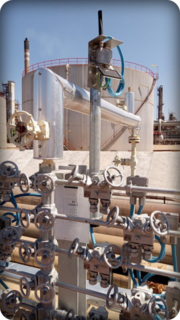LoRaWAN Solar Tracking Advantages
Solar Trackers Tilt to Follow the Sun Across the Sky
Challenge
A challenge for solar panel users is keeping solar panels directly facing the sun as it moves across the sky to obtain maximum exposure from the sun’s solar rays. Fixed solar panels are limited in their solar efficiency. Panels may be located in remote areas where cellular connectivity is limited.
Solution
Solar trackers are used to rotate the solar panels to follow the sun to maximum sun exposure and optimize solar panel efficiency. Tracking the solar tracker operation is best done using long range, wireless, reliable communications such as LoRaWAN. One controller gateway, like the MultiTech Conduit® IP67 Base Station, can control thousands of remote units. LoRaWAN communications is used for solar trackers due to its distinct advantages that address the specific needs of solar tracking systems
Advantages
• Long-Range Communication:
Solar farms can cover large geographical areas. LoRaWAN supports long-range data transmission, which is essential for maintaining communication across extensive fields without the need for dense infrastructure.
• Low Power Consumption:
Devices using LoRaWAN consume very little power. This is crucial for solar trackers, which often operate in remote locations with limited access to power sources. Low power consumption ensures that the trackers can function efficiently on battery or solar power for long periods.
• Cost-Effectiveness:
The infrastructure for setting up LoRaWAN networks is relatively inexpensive compared to other communication technologies. This cost-effectiveness is beneficial for large-scale deployments in solar farms, where many trackers need to be interconnected.
• Scalability:
LoRaWAN networks are highly scalable, allowing the addition of more trackers as a solar farm expands. This scalability ensures that the communication network can grow without significant increases in complexity or cost.
• Reliability and Robustness:
LoRaWAN offers robust and reliable communication, essential for the continuous operation and monitoring of solar trackers. Reliable data transmission is critical for precise solar tracking and optimal energy production.
• Bidirectional Communication:
LoRaWAN supports bidirectional communication, allowing not only data collection from trackers but also the ability to send control commands to them. This feature is vital for remote adjustments and optimization of the tracking systems.
Benefits
• Real-Time Monitoring and Control:
Solar farms can cover large geographical areas. LoRaWAN® supports long-range data transmission, which is essential for maintaining communication across extensive fields without the need for dense infrastructure.
• Predictive Maintenance:
Devices using LoRaWAN consume very little power. This is crucial for solar trackers, which often operate in remote locations with limited access to power sources. Low power consumption ensures that the trackers can function efficiently on battery or solar power for long periods.
• Environmental Adaptability:
The infrastructure for setting up LoRaWAN networks is relatively inexpensive compared to other communication technologies. This cost-effectiveness is beneficial for large-scale deployments in solar farms, where many trackers need to be interconnected.
• Data Analytics:
LoRaWAN networks are highly scalable, allowing the addition of more trackers as a solar farm expands. This scalability ensures that the communication network can grow without significant increases in complexity or cost.
• Remote Management:
LoRaWAN offers robust and reliable communication, essential for the continuous operation and monitoring of solar trackers. Reliable data transmission is critical for precise solar tracking and optimal energy production.
• Bidirectional Communication:
LoRaWAN supports bidirectional communication, allowing not only data collection
from trackers but also the ability to send control commands to them.
Summary
The use of LoRaWAN in solar trackers provides numerous advantages that enhance the performance, reliability, and manageability of solar tracking systems. Its long-range communication, low power consumption, cost-effectiveness, and robust bidirectional communication capabilities make it an ideal technology for optimizing solar energy production.
For additional information, contact: sales@multitech.com


